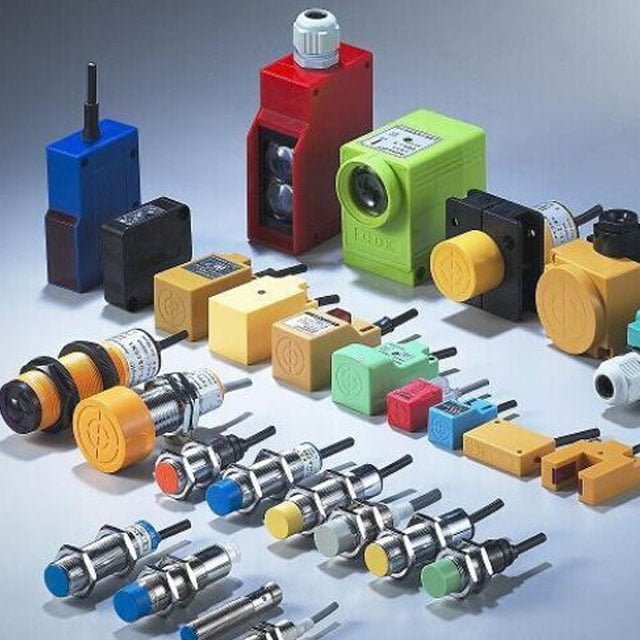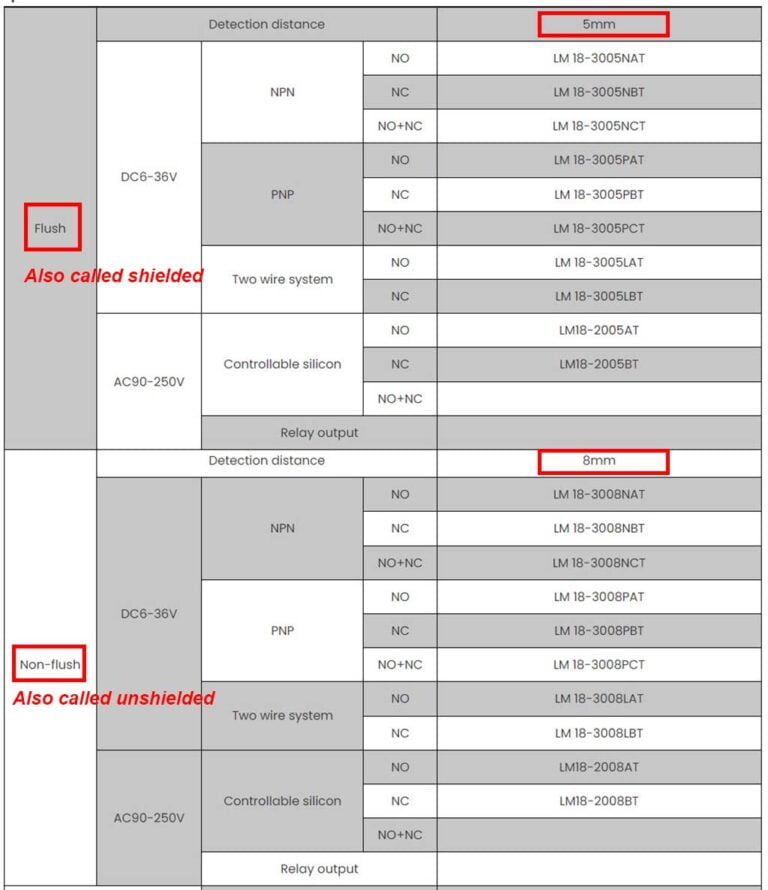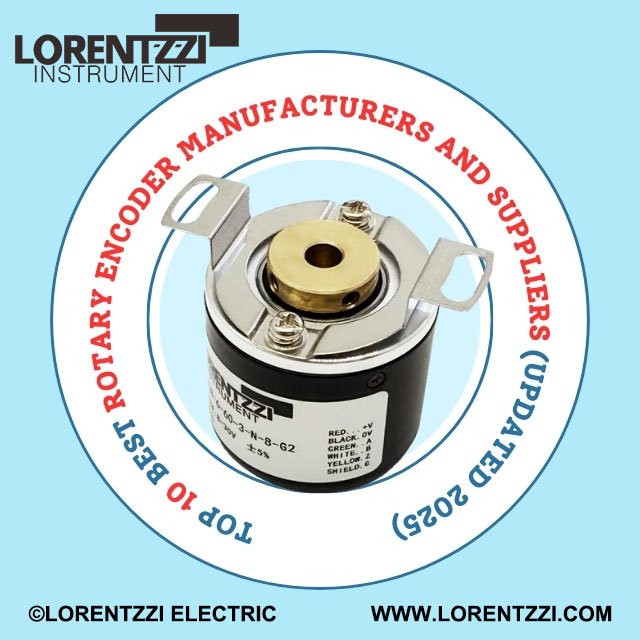There are 3 differences between a shielded proximity sensor(also know as flush sensor) and unshielded proximity sensor(also called non flush proximity sensor), so what are they? Let’s have a look them in following parts in this article.
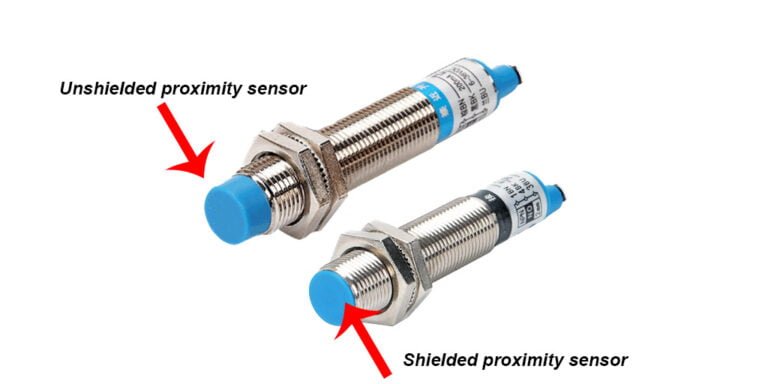
PBT sensor head length difference
A proximity sensor head material is PBT(Polybutylene terephthalate). PBT material have many advantages, such as strong stength, and non-flammable, and so on. The PBT head in our proximity sensors is in blue colour, some proximity sensor manufacturers might use orange(Autonics) colour or green colour(Pepperl+Fuchs). When putting a same model shielded and unshielded proximity sensors together, we can clear see, the unshielded proximity sensor head is longer than shielded one. Generally, the head length difference will be 4.5-12mm.
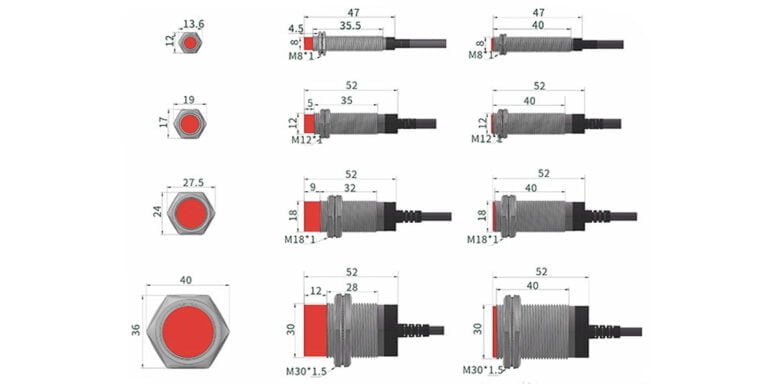
Sensing distances difference between a shielded and unshielded proximity sensor
From sensing distance aspect, the unshielded proximity sensor sensing distance is longer than shielded one.
For instance, a M18 nickel-plated brass housing size inductive proximity sensor sensing distance is only 0-5mm. While a same unshielded one sensing distance will be 0-8.0mm. Why? As the unshielded sensor head is out of its housing, so its magnetic field is larger and stronger.
So when a metal objects is approaching, it can sense from a long distance. Because the head of a shield sensor is buried into the housing, its magnetic field is weak blocked by the housing.
Resources from https://lorentzzi.com/products/proximity-sensor/inductive-proximity-sensor/lm18-18mm-diameter-inductive-proximity-sensor/
Installation methods difference between a shielded and unshielded proximity sensor
The installation method differs between the two types of sensors.
When installing a shielded proximity sensor, the sensor’s detection surface can be flush with the installation surface. As mentioned earlier, the magnetic field emission is limited to the head of the cylinder, with no magnetic field generated on the cylinder’s side. This installation method offers the advantage of preventing damage caused by collisions with the detected object.
For unshielded proximity sensors, the head of the sensor needs to be exposed beyond the installation surface, since its side can also emit a magnetic field. It is crucial to ensure the successful completion of the circuit by the magnetic field in this area. Although this sensor provides a longer detection distance compared to the shielded proximity sensor, there is a risk of damage due to the object’s inertia when it approaches the sensor.
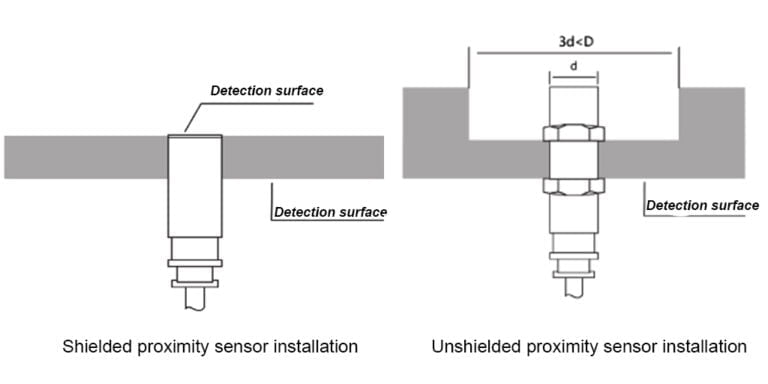
Tips when installing more than 2 pieces proximity sensors
Additionally, it is important to consider that when installing multiple proximity sensors side by side, sufficient spacing should be maintained to prevent mutual interference between the sensors and avoid magnetic interference.
In the case of shielded proximity sensors, the spacing should be equal to or greater than twice its diameter.
For unshielded proximity sensors, the distance between two sensors should be equal to or greater than three times its diameter. The inductive proximity sensors can only detect metallic substances,
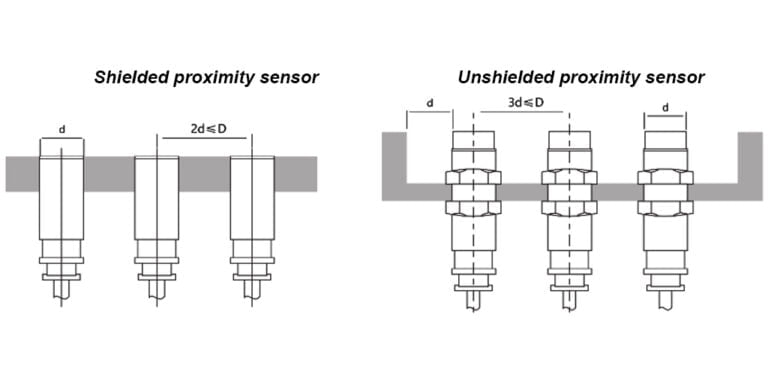
Conclusion
Here above the 3 differences between a shielded and unshielded proximity sensor. Now by knowing these differences, we can choose the right proximity sensor accordingly. If you still have questions, please leave us a comment below, we will provide you a professional answer within 24 hours.

